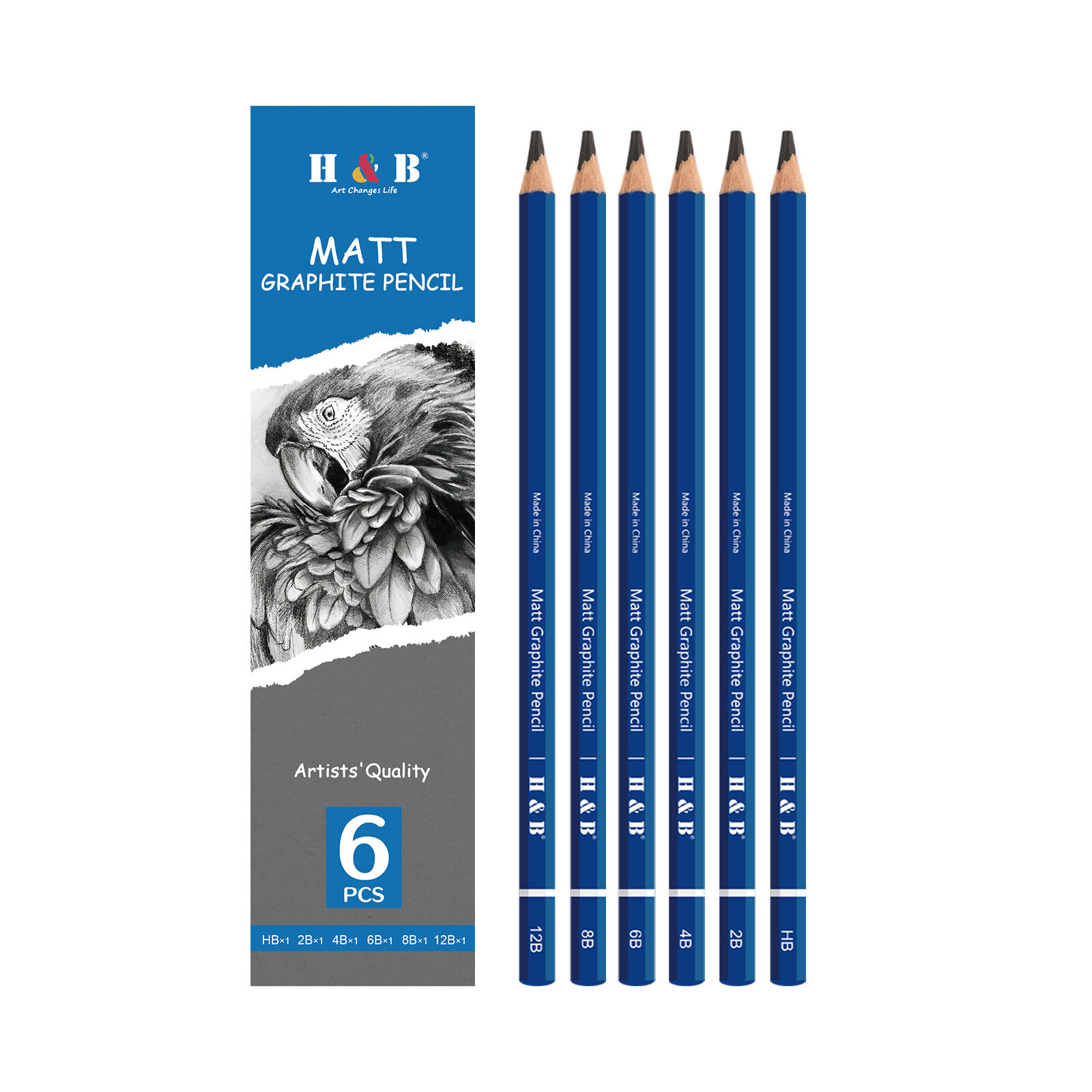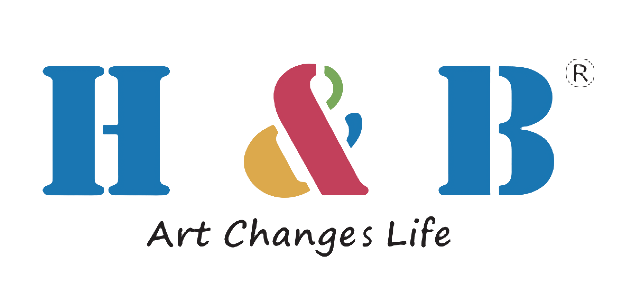Watercolor pencils represent a revolutionary artistic medium that combines the precision of colored pencils with the fluid expressiveness of watercolor paints. These versatile tools have transformed how professional illustrators approach their craft, offering unprecedented control and creative flexibility. Unlike traditional watercolors, watercolor pencils allow artists to build layers gradually, making corrections easily while maintaining the spontaneous quality that makes watercolor techniques so appealing. The ability to work both wet and dry opens up endless possibilities for professional illustration projects across various industries.
Understanding Watercolor Pencil Fundamentals
Composition and Quality Characteristics
Professional-grade watercolor pencils contain high-quality pigments bound with water-soluble binders that dissolve when activated with water. The pigment concentration determines color intensity and lightfastness, crucial factors for professional work that must maintain its appearance over time. Premium brands typically use finely ground pigments that create smooth, even washes when activated, while lower-grade options may produce grainy or inconsistent results. Understanding these quality differences helps professionals select appropriate tools for specific project requirements.
The core composition affects how watercolor pencils behave during application. Softer cores release pigment more easily but may break under pressure, while harder cores provide better control for detailed work but require more water activation. Professional illustrators often maintain sets with varying hardness levels to accommodate different techniques within a single project. Temperature and humidity also influence performance, with watercolor pencils becoming softer in warm conditions and harder in cold environments.
Tool Selection and Quality Assessment
Selecting appropriate watercolor pencils requires evaluating several technical factors beyond basic color range. Lightfastness ratings indicate how well colors resist fading when exposed to light, essential for commissioned work or pieces intended for display. Professional sets typically include lightfastness information for each color, allowing artists to make informed decisions about permanence versus visual impact. Colors rated I or II offer excellent lightfastness for professional applications.
Pigment opacity varies significantly between colors within the same set. Transparent colors like quinacridone violet create luminous glazes, while opaque colors like cadmium yellow provide solid coverage. Understanding these characteristics enables strategic color selection for specific effects. Professional illustrators often create personal reference charts showing how each color behaves in various applications, wet and dry, to streamline project workflow.
Professional Techniques and Applications
Dry Application Methods
Dry watercolor pencil techniques form the foundation of professional illustration work, providing precise control over line quality and color placement. Cross-hatching with watercolor pencils creates rich textural effects that can be selectively activated with water later. This approach allows illustrators to build complex color relationships gradually, testing combinations before committing to final washes. The ability to erase or modify dry applications provides flexibility during the creative process.
Burnishing techniques using colorless blenders or white pencils can create smooth gradients and highlight effects. Professional illustrators use these methods to achieve photorealistic textures in commercial work where precision is paramount. Layering multiple colors dry creates optical mixing effects that produce more vibrant results than single-color applications. This technique proves particularly valuable for skin tones, natural textures, and complex atmospheric effects.
Wet Activation Strategies
Water activation transforms dry watercolor pencil work into fluid, painterly effects that rival traditional watercolor techniques. Brush selection significantly impacts results, with natural hair brushes providing superior water retention and synthetic brushes offering more precise control. Professional illustrators typically maintain multiple brush sizes and types to handle different activation needs within a single project. Round brushes excel for organic shapes while flat brushes create clean edges and geometric forms.
Controlled water application prevents unwanted bleeding and maintains crisp edges where needed. Using damp rather than wet brushes provides better control over pigment release, especially important for detailed illustration work. Professional techniques include partial activation, where only selected areas receive water treatment, creating dynamic contrasts between sharp pencil lines and soft washes. This selective approach allows for sophisticated visual hierarchies essential in commercial illustration.

Color Theory and Mixing Strategies
Primary and Secondary Color Relationships
Understanding color theory principles becomes crucial when working with watercolor pencils in professional contexts. Primary colors in watercolor pencil form often differ from traditional paint primaries due to pigment limitations and binding requirements. Professional sets typically include multiple versions of primary colors, such as warm and cool reds, allowing for more sophisticated color mixing and temperature control. These variations enable illustrators to create more nuanced palettes tailored to specific project needs.
Secondary color mixing with watercolor pencils occurs both physically and optically. Physical mixing happens when wet colors blend directly on paper, while optical mixing results from layering transparent dry applications. Professional illustrators leverage both approaches strategically, using physical mixing for bold statements and optical mixing for subtle transitions. Understanding how colors interact when activated with water prevents muddy results and maintains color clarity throughout the illustration process.
Advanced Color Harmony Techniques
Professional color harmony extends beyond basic complementary relationships to include split-complementary, triadic, and analogous schemes. Watercolor pencils excel at creating subtle color temperature shifts that enhance mood and atmosphere in illustration work. Warm and cool versions of the same hue can create depth and dimension without relying on value changes alone. This approach proves particularly effective in commercial illustration where brand colors must be interpreted creatively while maintaining recognition.
Color temperature manipulation through strategic pencil selection creates visual interest and guides viewer attention. Professional illustrators use warm colors to advance elements and cool colors to recede backgrounds, creating effective spatial relationships. The ability to adjust color temperature through selective water activation adds another layer of control unavailable with traditional media. This flexibility allows for last-minute adjustments to meet client requirements without starting over.
Surface Preparation and Paper Selection
Paper Weight and Texture Considerations
Professional watercolor pencil work demands careful paper selection to achieve optimal results. Paper weight affects how water moves across the surface and how long working time remains available. Heavy papers above 200gsm provide stability for multiple water applications without buckling, essential for professional presentation quality. Medium-weight papers between 140-200gsm offer good performance for most applications while remaining cost-effective for preliminary work and studies.
Paper texture significantly influences the final appearance of watercolor pencil illustrations. Hot-pressed papers with smooth surfaces enable fine detail work and precise line quality, ideal for technical illustration and architectural rendering. Cold-pressed papers with moderate texture create interesting granulation effects when water is applied, adding visual interest to organic subjects. Rough papers produce dramatic textural effects but may be difficult to control for detailed professional work.
Surface Treatment and Preparation Methods
Proper surface preparation ensures consistent results across professional projects. Stretching paper prevents warping during water application, particularly important for large-format illustration work. Professional methods include taping paper to rigid backing boards while damp, allowing it to dry taut. This preparation step proves essential for commissioned work where presentation quality cannot be compromised by surface irregularities.
Priming techniques can modify paper characteristics to suit specific project needs. Light washes of clear water can test absorption rates and identify potential problem areas before beginning final artwork. Some illustrators apply diluted sizing solutions to slow water absorption for extended working time. These preparation methods require testing on sample pieces to ensure compatibility with planned techniques and prevent unexpected results during final execution.
Professional Project Workflow
Planning and Conceptualization Phase
Professional watercolor pencil projects begin with thorough planning to maximize the medium's unique advantages. Initial sketches help determine where dry techniques will provide necessary precision and where wet activation will enhance visual impact. Color studies using actual project pencils prevent surprises during final execution and help communicate concepts to clients effectively. Professional illustrators often create small test pieces demonstrating key techniques before committing to full-scale work.
Reference gathering becomes particularly important for watercolor pencil work due to the medium's ability to capture subtle color variations and atmospheric effects. Professional photographers and color-accurate monitors ensure reference materials translate properly to pencil selections. Understanding how different lighting conditions affect color perception helps illustrators make informed decisions about palette choices and color temperature relationships throughout the project timeline.
Execution and Quality Control Methods
Systematic execution prevents common problems that can compromise professional watercolor pencil illustrations. Working from light to dark values allows for easier corrections and prevents muddy color mixing. Professional illustrators establish value relationships early using light applications, then build intensity gradually through multiple layers. This approach maintains color clarity while providing flexibility to adjust relationships as the illustration develops.
Quality control checkpoints throughout the process ensure professional standards are maintained. Regular photography under consistent lighting conditions documents progress and reveals areas needing attention. Professional illustrators often work on multiple sections simultaneously, allowing previous areas to dry completely before adding additional layers. This workflow prevents overworking and maintains the fresh, spontaneous quality that makes watercolor techniques appealing to clients.
FAQ
What paper weight works best for professional watercolor pencil illustrations
Professional watercolor pencil work typically requires paper weights of 200gsm or higher to prevent buckling and maintain surface integrity through multiple water applications. Heavier papers provide better stability for detailed work and allow for corrections without surface damage. Cold-pressed papers in this weight range offer excellent texture for most professional applications while maintaining sufficient tooth for good pencil adhesion.
How do you prevent colors from becoming muddy when mixing watercolor pencils
Preventing muddy colors requires understanding color theory and limiting mixing to closely related hues. Use no more than three colors in any mixture and ensure one color dominates the blend. Allow layers to dry completely between applications and avoid overworking wet areas. Clean brushes frequently when activating different colors and work from light to dark values to maintain color clarity throughout the illustration process.
Can watercolor pencils achieve the same results as traditional watercolor paints
Watercolor pencils offer unique advantages including greater control and the ability to combine linear and painterly techniques within single illustrations. While they may not achieve the same fluid spontaneity as liquid watercolors, they excel at precise detail work and gradual color building. Professional results depend more on technique and understanding the medium's characteristics than attempting to replicate traditional watercolor effects exactly.
What brush types work best for activating watercolor pencils professionally
Natural hair brushes, particularly kolinsky sable, provide superior water retention and smooth pigment release for professional watercolor pencil activation. Round brushes in sizes 6, 10, and 14 handle most professional applications effectively. Synthetic brushes offer more precise control for detailed work and maintain their points better over time. Professional illustrators typically maintain both types to handle different activation needs within complex projects.
Table of Contents
- Understanding Watercolor Pencil Fundamentals
- Professional Techniques and Applications
- Color Theory and Mixing Strategies
- Surface Preparation and Paper Selection
- Professional Project Workflow
-
FAQ
- What paper weight works best for professional watercolor pencil illustrations
- How do you prevent colors from becoming muddy when mixing watercolor pencils
- Can watercolor pencils achieve the same results as traditional watercolor paints
- What brush types work best for activating watercolor pencils professionally


